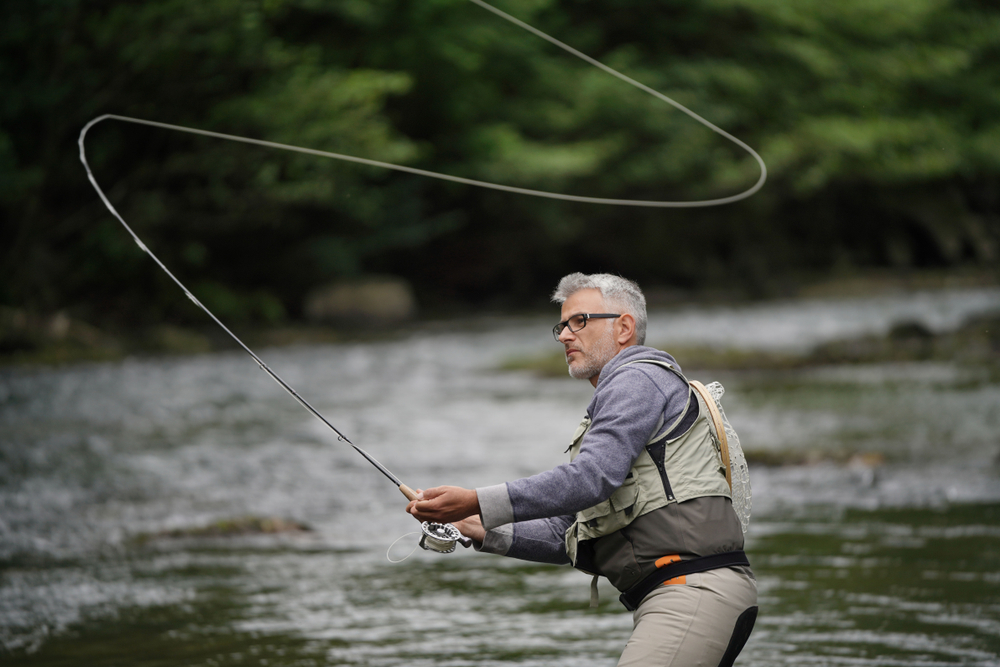The Definition:
Fly fishing is a special form of angling where a fly fisherman uses a unique fishing rod and line to cast artificial flies into the water.
Fly Fishing – Pastime, Sport, and Lifestyle
To fly fish does not quite mean the same thing to every fisherman. There are those who take the occasional trip down to the local lake fly fishing on a sunny long weekend to try their luck. A few hours by the water casting your line is often just what the doctor ordered for stress relief and to find some peace and quiet. Actually catching fish in this case is just a bonus by-product of time well-spent.
Sport fly fishing however, can hold a more competitive mood. The competition can take on many forms; from trying to beat your own record to competing in professional tournaments. While the activity is still supposed to be fun and relaxing, the competitive component has a way of enticing those who appreciate it. Knowing that there is something on the line can be motivating and quite exciting. It encourages learning the sport and trying to improve technique. The stakes of competition can vary widely; from bragging rights to considerable cash prizes in professional competitions.
Finally, there are enthusiasts who make fly fishing a lifestyle. It is common to stay on top of the latest trends, gear, and technique to perfect one’s game. There is always something new to learn and to try out. Spending numerous days by the stream fly fishing and perfecting technique is a way of life for some hard-core fans.
A Brief History and Timeline
Rome and Macedonia:
It is difficult to pinpoint the exact date when the first human went out fly fishing, but historians place the beginning of the activity some time near the end of the second century. Ancient Roman writings describe an observed fishing method that closely resembles that of modern fly fishing. Of course, the practice could have started some time earlier without leaving a record.
Great Britain:
The beginning of modern fly fishing is believed to have taken place in Great Britain, some time in the 15th century. Over the years, the activity picked up pace, culminating in the establishment of fly fishing clubs and introduction of fly fishing books in the 19th century.
Japan:
Japanese fly fishing, known as Tenkara, was first recorded in the 19th century. Its origins are traced back to the mountains of Japan, where professional fishermen used the method to fish in small streams. The long rods were used because they allowed the exact placement of the fly to where the fish was thought to be.
The Japanese used bamboo to make fishing rods, which allowed the rods to remain longer and lighter. By contrast, Western fly fishing rods were made of wood and were quite a lot heavier. With time, Western fly fishing rods were built shorter and reels were developed to handle longer lines.
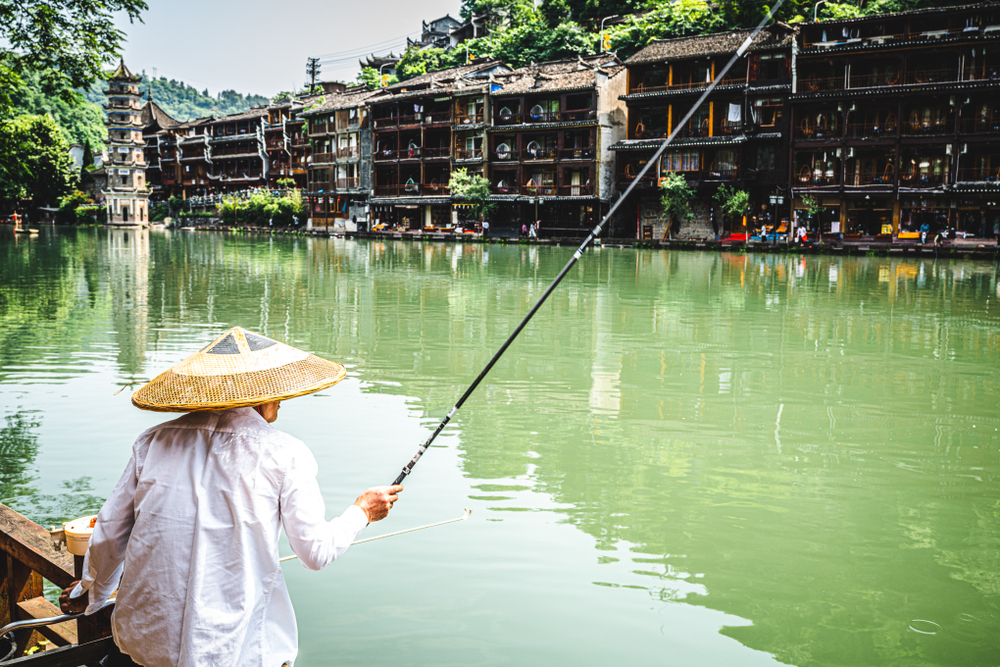
North America:
Anglers in the United States are believed to be the first to have used fake bait for fly bass fishing so commend fly fishing USA for being a pioneer. The pursuit of bass encouraged the development of the modern spinner/fly lure and bass popper.
The late 19th century witnessed a growth in popularity of fly fishing in the United States. Innovative fly patterns were developed and literature on the subject became more abundant as anglers started keeping track of their approach and accomplishments. Popularity encouraged innovation and innovation brought further interest in the sport. The sport grew, reaching new peaks in the 1920s. Today, as baby boomers are set to retire, fly fishing is picking up steam like never before.
Fly Fishing Tackle and Gear
There is a wide variety of fly fishing tackle and gear available. Depending on your level of expertise, your needs will vary.
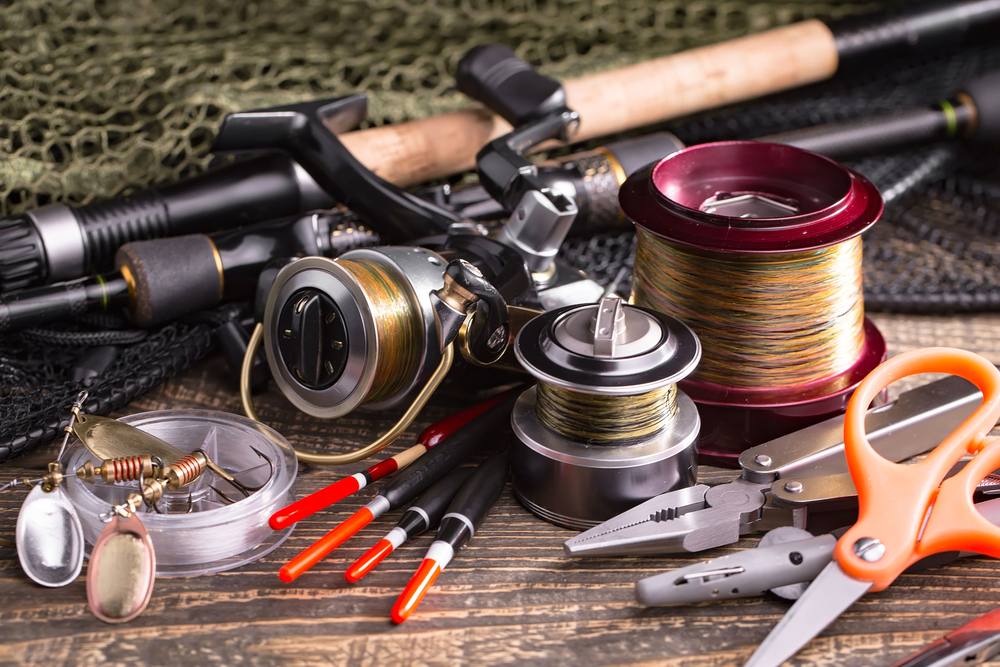
Fly Fishing Rods:
Fly rods will usually range in length between 2 m and 4 m. They are normally matched to the appropriate lines using weight as the matching criteria. The type of fish you are going after will most often determine the type of rod/line combination that you need.
It is infinitely vital to try and get the right rod for you. There are many fly rods available on the market with different materials, lengths, and utility. The top three brands in fly rods are:
- Sage
- G. Loomis
- Thomas and Thomas
Fly Fishing Reels or Fly Casting Reels
In recent years there have been some serious advances in the technology of fishing reels. Some of the newer reels feature disc-type mechanical and adjustable drag systems to catch fish that take long and powerful runs.
Fishing reels are not all created equal. It is important to choose the fishing reel that you will be most comfortable with. Some of the top fishing reel brands are listed below.
- Abel
- Tibor
- Orvis
Fly Fishing Lines:
The fly fishing line is comprised of several components. First, the arbor connects to the backing portion of the line. The backing builds a larger diameter to allow the fly line to use the entire diameter of the fly reel and provides extra line to bring in the hard fighting fish.
The fly line itself is a thick colored line, usually 27 m in length. Fly lines range in taper, weight, and buoyancy. The type of fish you are trying to catch combined with the rod you have often determines the kind of line you need to use. The line connects to the leader, which in turn connects to the tippet, and finally the tippet connects to the fly itself. Every component in the line serves a vital purpose to make fly fishing more effective.
Fishing Flies:
Flies are grouped into two major categories – imitative and attractive.
Imitative flies are made to look like the fish’s usual food items. The fish is supposed to mistake the fly for its normal food source and make the bite. The closer the fishing fly resembles the real food source, the better in this case.
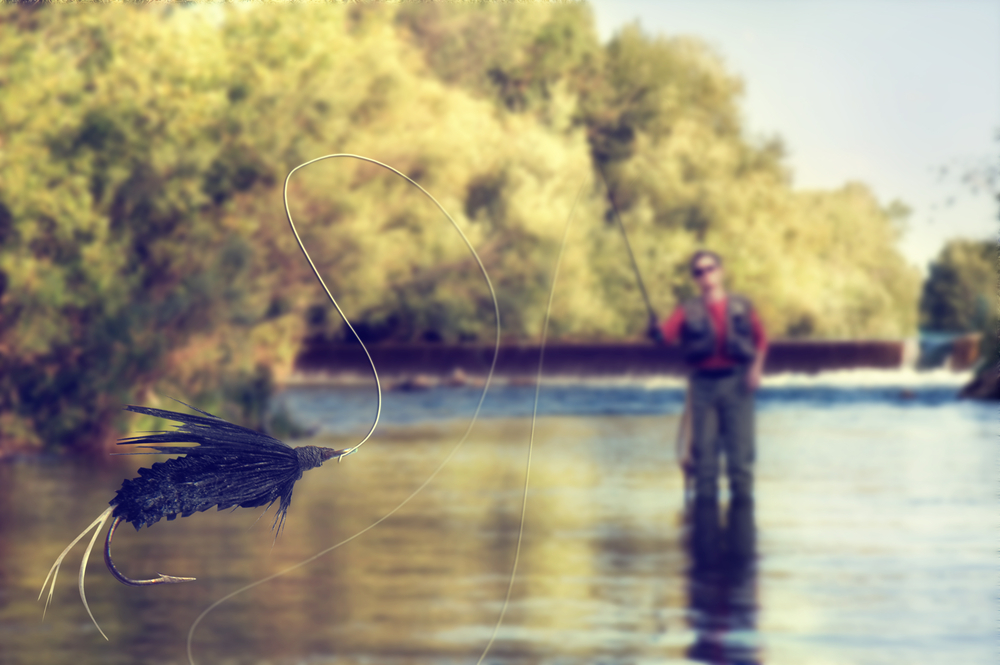
Attractive flies work by arousing the fish’s natural instincts and entice the fish to strike. These flies do not necessarily imitate the natural prey of the fish, but they do provide some novel features that attract and encourages the fish to strike.
- Dry flies are used for fishing above the surface.
- Emergers are flies that stay partially submerged.
- Wet flies or streamers fly fishing (or streamer fly fishing) are flies that are used for fishing below the surface.
The Fish – Different Species
There is a wide variety of species that a fly fisherman can pursue.
Freshwater Fly Fishing Species: Cold Water
- Fly Fishing Trout
- Fly Fishing Salmon
- Fly Fishing Steel-head
Freshwater Fly Fishing Species: Cool Water
- Pike
- Perch
- Walleye
Freshwater Fly Fishing Species: Warm Water
- Bass
- Chub
- Catfish
Salt Water Fly Fishing Species:
- Redfish
- Halibut
- Surfperch
- Sharks
- Marlin
Fly Fishing’s Most Wanted – The Rainbow Trout
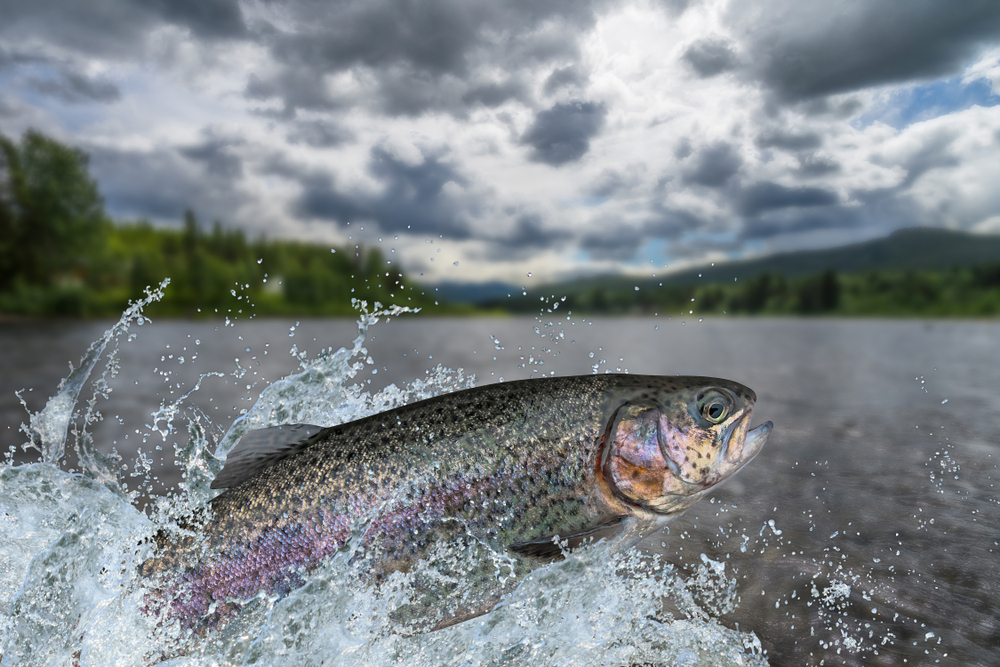
The rainbow trout is the most popular species of fish sought after by the fly anglers. Its colors and fighting spirit make it a beautiful and entertaining fish to go after. It is also the most common type of trout out there.
Top 5 Fly Fishing Trout Species
- Fly Fishing Rainbow Trout
- Fly Fishing Brown Trout
- Fly Fishing Golden Trout
- Fly Fishing Steel-head Trout
- Fly Fishing Lake Trout
Fly Fishing Techniques
Dry Fly Fishing:
Dry fly fishing is done with a floating line and flies that stay on the surface of the water. This technique targets the fish when feeding at the surface. While trout finds 90% of its diet below the surface, it is much easier to detect a bite and can be quite exhilarating to witness the strike.
Once a fly is taken under by the fish, it may not be ideal for floating until it dries. Therefore, it is highly recommended to have a few flies with you to allow for the ones that got wet from the bite to dry off.
Wet Fly Fishing or Nymphing:
Wet fly fishing involves sinking the fly using weights to deliver it closes to the trout at the bottom of the lake or fishpond. As most of the trout does feed at the bottom of the lake when there are no insects on the surface, wet fly fishing can be a lot more effective at these times.
Kayak Fly Fishing
Kayak fly fishing has become quite popular in recent years. It usually involves casting the line from a sitting position. While this may sound uncomfortable, it is actually quite easy to do, as long as you do not put too much force into it, or you might flip over.
There are a few very important things to keep in mind when setting out on a kayak fishing trip.
- The water temperature should be taken into consideration. Cold water can be deadly as it approaches freezing temperatures. Always assume that there is a good chance you can flip over and end up in the water. It will be very difficult to get yourself together and back into the kayak before suffering potential lethal hypothermia.
- Make sure the weather is suitable for this activity. Strong winds, large waves, lightning, or heavy rain can put a serious hamper on your fishing trip.
- Always wear a vest. Period!
- Try not to venture out alone. It is always better to go kayak fly fishing with a friend to give you that extra assurance that in case of an emergency there is someone there to help.
- Bring a cell phone, whistle, and flares in case of an emergency.
Top 5 Beginner Fly Fishing Tips From Fly Fishing Guide School
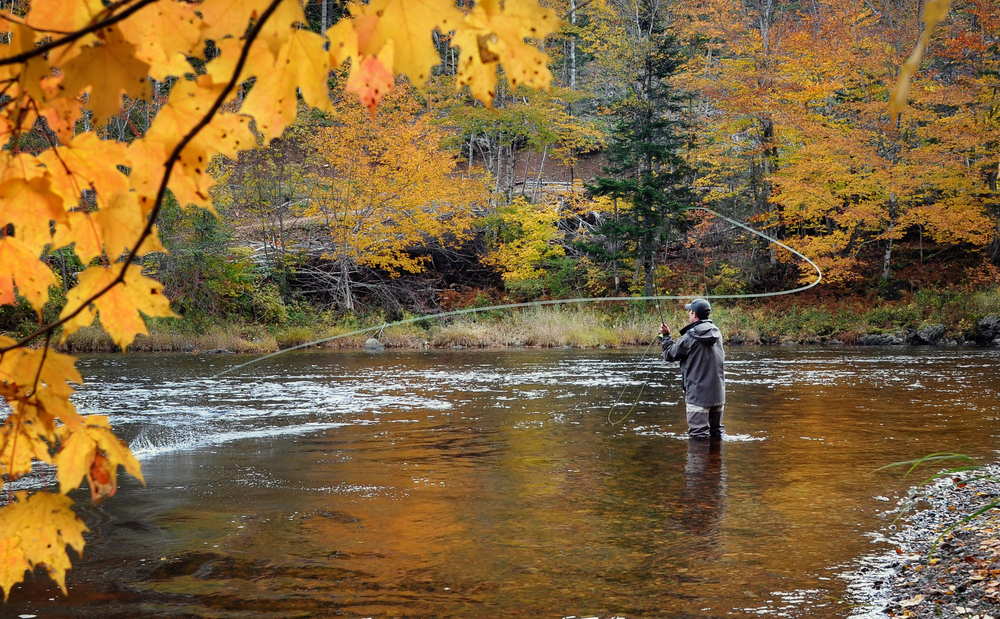
- Practice Your Casting
It takes some time to get the hang of Fly Fishing, so make sure you practice your casting technique. Try practicing the wading technique at home while up against a wall or in your backyard. You can use markers to get an idea of the movement you need to master, so when you go out on the lake you have a better understanding. - Choose The Right Rod
Choosing the right rod is like choosing the right baseball bat: it has to feel comfortable for you. The rod, the handle, the weight all has to cater to your needs. Nowadays, the better rods have a great feel for when a fish bites, so make sure that feel translates through your rod to you. - Get The Right Grip
If you want to reel in the big ones, make sure you get the right grip. You want to make sure that you can maintain your grip of the rod at all times no matter how big of a fish bites. Learn the right grip and practice it; that way the best fish won’t slip your grasp. - Running Fish
Ideally, a fish would swim nice and slow into your bait, bite it and you’d reel it in. Unfortunately, that’s not the reality. Make sure you practice how to reel in a fish when it’s either running away or towards you as that is the more likely scenario when you’re out on the lake. - Match the Hatch
Start off by trying to match the available forage that the fish are feeding on. Look for insects on the surface of the water and baitfish in the shallows. If you can’t find anything then try turning over a few rocks in the stream and see what’s crawling on the bottom. Many insects start their life cycle in the water and fish readily feed on them.
Whether you are using wet or dry flies, make sure you pick the right ones for your fly fishing adventure.

